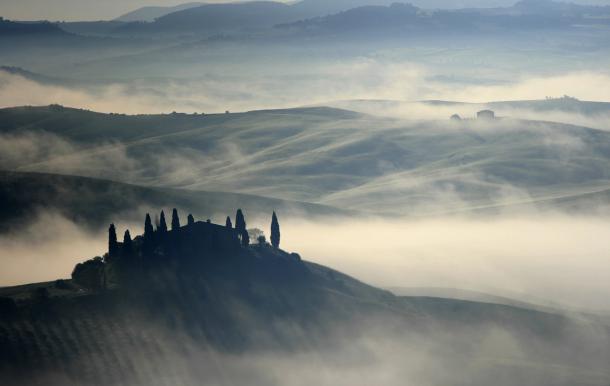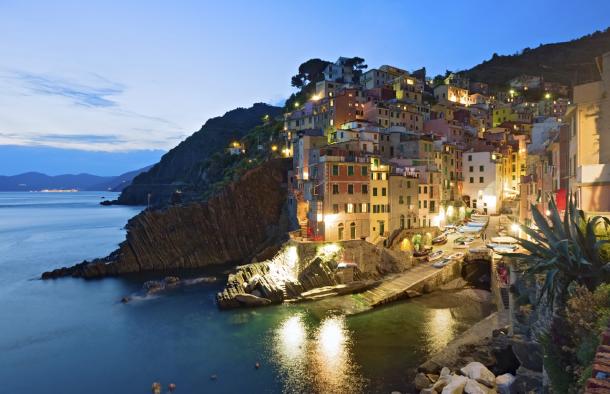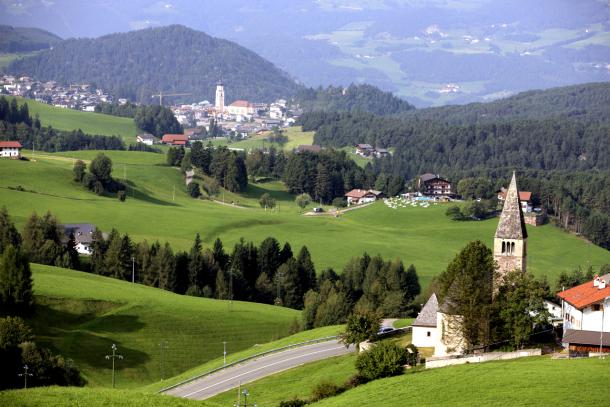An Introduction to Italian Cuisine by Expert Marcella Hazan
To understand something about Italian cooking you must first understand that Italy is a very young country, just over 150 years old, but a very old region. Before becoming a country, Italy was divided into kingdoms, dukedoms, republics, princedoms, and Papal areas. All these didn’t have much contact with one another.

Another reason is the climate. You go to the north and you’re next to Austria, and you go down the boot to Sicily and you’re in the same parallel as Africa. So people cook with what they have on hand, with what grows in their area. That’s the way it was years ago, and that’s the way it still is. Yet another thing: we have a number of micro-climates in Italy. Turin is one of the coldest cities of Europe in the winter, yet just 60 miles away, in Liguria, on the coast, you find carnations and roses in bloom. Another micro-climate exists in Naples, which has a mild climate, as compared to nearby Avellino which often receives the first snow of the winter.
There’s another difference between the north and the south of Italy: The north has a wide plain, but as soon as you go south of Emilia Romagna you find the mountainous spine of Italy, just look at a map. So in the north, where you have a plain, you have pasture. Having pasture we have cows. So we have beef and veal, so that is why at the north and the center of Italy we use that kind of meat. Having cows we have milk, butter, and cream, and we use them because we have them. We also have one of the kings of the cheese that is Parmigiano Reggiano.
Olive oil is all around the Appenine and at the heel of the boot so it is used all over but much more in the south becuase they don’t have cows so they don’t have milk, butter, and cream. But they have goat and sheep, which is why they use pecorino cheese which comes from the sheep. And if you go from Le Marche towards the south you don’t find dishes of veal but you find lots of lamb. Also pork and chicken. Or if you find beef it’s imported but they don’t know how to do it right.
Also the home-made pasta is different as you travel south because the southern part of Italy is poorer, it doesn’t have industry but also it does not have plains, the agriculture is very poor. There is very little arable land, not enough to have a real production. You have things like tomatoes because you have the sun, there used to be more. The southern part of Italy is very poor, that’s why we have so many immigrants in America from the southern part of Italy, they didn’t have enough to eat at home and they were forced to leave. When they did have food they made wonderful dishes with very little…
They are all things that don’t cost much, that is why you have capers, olives in the cooking, red hot peppers, wonderful dishes, without using costly ingredients. They don’t use very often ingredients that come from the north, because they consider them imported. This is the biggest difference. Going back to the first thing about divided Italy: in many states or republics or whatever, they have a certain tradition in their cuisine. So the tradition in Emilia Romagna is home-made pasta. They have the big plain of the Po valley, they have Parmigiano Reggiano, they have wonderful pork products, also because they feed them the whey that is left over from making the cheese. Also they have the right air to dry out the prosciutto, culatello and so on.

And also it is a land with temperature and soil suitable for vegetables and fruit, if you pass the area on the autostrada in the end of April, May, you see the trees in flower, peaches, apricots, an endless garden. Then you go to Tuscany, they don’t need homemade pasta, it is not their tradition. Their tradition is soup, and use beans often. They have the “chianina”, meat from Val di Chiana, t-bone steaks, and they use olive oil because they grow the olives there.
If you go to Liguria which is the region which has a lot of sun and warm weather you have a lot of herbs that they use, majoram, thyme, and also the pesto made with herbs so the cuisine is different. Piedmont, first because it is near France, but the homemade pasta they make only with the yolk of the egg – and instead of using the whole egg they use 29 or 30 yolks. It is a completely different cuisine. If you go to Milan you have a lot of rice and in the Veneto a lot of polenta, they do a lot with polenta, they give children polenta for breakfast instead of bread, they serve it with different sauces. They have zallet (cookies from polenta), they have a cake made with polenta, they do a polenta pasticciata, a type of lasagna made with cold polenta cut very thin and they use that instead of pasta. They fry it, they broil it, they do everything with polenta!
If you go down to the south, it’s always a question of money, so they skip the egg when they make the pasta and put water, and they use a harder flour, and you reach Puglia where they use grano duro, so they have a pasta that you can’t roll out, it’s impossible. So they do hard, chewy pasta, orecchiete, zoccoli, and they need a stronger sauce – you can’t do a delicate sauce because the pasta is not delicate.
And if you get to Sicily you have a lot of influence from the Greeks, Spaniards, Arabs, and cous-cous is a traditional dish. And that also applies to the sea products. The fish of the Adriatic is different from the fish of Tirrenean, and in Sicily they have sword fish that comes from the warm water. So they cook what they have and that is why we have regional cooking. It’s not because the region wanted a special cooking but from the forces I explained.
Italians are very provincial, and they get mad if they leave Venice and go to Florence and can’t get a good spaghetti neri. They want to have it, it’s their cuisine, they don’t understand they can’t get that in Florence. The cuisines from one region to another don’t travel too much, also because Italians want to have the local things.

I think the cooking today is as good as when I was a child. French cooking is very different, if you are talking about French you talk about restaurant cooking, the gourmet cooking, but we don’t have that in Italy. We have home cooking. Most Italian dishes don’t take a lot of time. Tortellini, for example, is a dish for a special occasion. First of all Italian cooking is seasonal, second it is not very elaborate. I think you get in trouble in Italy if you try to be elaborate.
I might come home just after noon, pound my veal chops, bread them, do cotolette, cook some broccoli and pass them in olive oil and garlic, fry some potatoes, prepare some salad, and we are at the table at quarter of one, so what is the problem? There is another thing that is different. Italians don’t go out shopping with a list. They go to the market to see what is fresh and at that moment decide what to cook, which makes a big difference. We want wonderful ingredients but we don’t do much with them, we want the flavour to come out, we don’t want to cover the ingredients. Everything is fresh.
I think the success of Italian food is that it’s the food that is easiest to live with. Also, in a restaurant, nothing is cooked until you order it. If you eat Italian food in the American way it is fattening. Italians don’t serve butter on the table with the bread. Also they don’t serve olive oil on the table. Now in America it is fashionable, instead of having the dish with butter they have a little dish full of olive oil so that people dip their bread in it. Because butter got a bad name, olive oil got a good name, and all the Italian restaurants in America do this, but it’s not Italian at all.
You don’t have the big portions, you usually don’t have cake or dessert but fruit or something made with fruit. And we don’t snack. At home supper is usually very light, pastina in brodo, a formaggino, maybe a vegetable, but very light. That is also healthy because eating a big dinner means you go to sleep and burn less calories. Also I wish that in the United States they would learn how to eat long pasta without a spoon. That is the fault of the restaurant, because they put a spoon there. People don’t know how to eat pasta with just a fork.
Text Copyright © Marcella Hazan, all rights reserved
